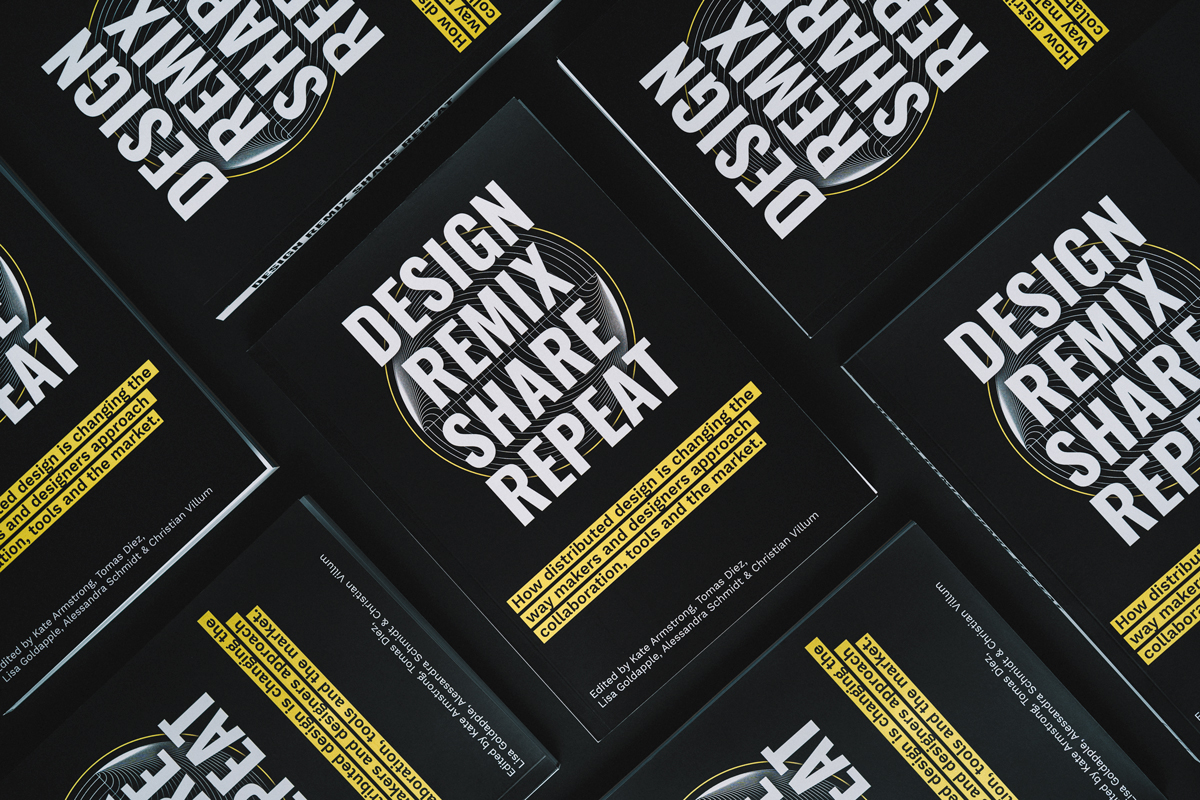”The future is already here, it’s just not very distributed” William Gibson, science fiction novelist.
Consider it DD-day for mass production and game over for the ‘take, make, dispose’ model! This is the second in a series of four books developed within the Distributed Design platform. Distributed Design (DD) allows creatives, designers, makers and innovators to participate in the creation of a new model of production and consumption, in which “bits travel globally, while atoms stay locally”. Including the alphabet of Distributed Design and the industrial revolution 4.0, explaining the concepts often heard but not always easy to understand.
DESIGN REMIX SHARE REPEAT
A book that explores how distributed design is changing the way makers and designers approach collaboration, tools and the market.
This book has been created by the members of Distributed Design Platform, a project funded by the European Union through the Creative Europe fund, that fosters the role of emerging Makers and Designers as part of this new digitized world. ”The future is already here, it’s just not very distributed” WIlliam Gibson, science fiction novelist. Consider it DD-day for mass production and game over for the ‘take, make, dispose’ model!
This is the second in a series of four books developed within the Distributed Design Platform. Distributed Design (DD) allows creatives, designers, makers and innovators to participate in the creation of a new model of production and consumption, in which “bits travel globally, while atoms stay locally”.

The Distributed Design project is funded and supported by the Creative Europe program of the European Commission. Each of these four books (published annually) will explore the advances of the platform. In our first book, ‘Fab City: The Mass Distribution of (Almost) Everything’ (2018), we introduced the overarching themes supporting the idea of Distributed Design as a new practice emerging from the digital revolution in fabrication, communications and computation. This book serves as an entry point into the state of the art.
We contextualise this action-based research in a wider framework of the new urban model of the Fab City Global Initiative3. Created in 2014, it proposes a shift in the urban paradigm from ‘PITO’ (product-in, trash-out) to ‘DIDO’ (data- in, data-out). Fab City focuses on the movement of data, use of local material supply chains and digital fabrication as an alternative to the movement of materials and goods from production to consumer. In the case of design, this not only provides consumers with more control over their final products by allowing them a voice in the production process, but can also provide designers access to collaborators and tools across global infrastructure networks. This urban model can provide solutions to issues of social and environmental inequality by lessening our reliance on centralised systems and scarce resources to ultimately improve life.
The DD model challenges the existing linear paradigm of the First Industrial Revolution and its associated phenomena; patenting, access to fabrication tools, supply chain distribution, value chains and technological development. We live in a moment of technological and crisis convergence. The emergence of Industry 4.0 and the global shift away from fossil fuels; stress in natural ecosystems; climate change and over-consumption has raised questions about the nature of and culture around the products we buy, use and dispose of – as well as the support systems in which they circulate globally. Through the Distributed Design approach, we are promoting, implementing, researching and developing alternatives to mass production and linear consumption models after 200 years of Industrialisation.

Distributed Design is a phenomenon that integrates design skills and the ‘making’ approach to enable the development of new entrepreneurial types of professional producers. On one hand, designers acquire more technological and practical skills. On the other, makers evolve their design attitude and capabilities. This convergence is generating new markets, which require new business models and distribution models. In turn, this breeds new ways of working, thinking and valuing, which are explored in the observations, research and case studies presented in this book. These accounts come from members and associated members of the Distributed Design platform, who gather from cultural organisations, industry and educational institutions to advocate for Distributed Design, and foster the role of European creatives in actively shaping this emerging field.
Ready to get your hands on it??
